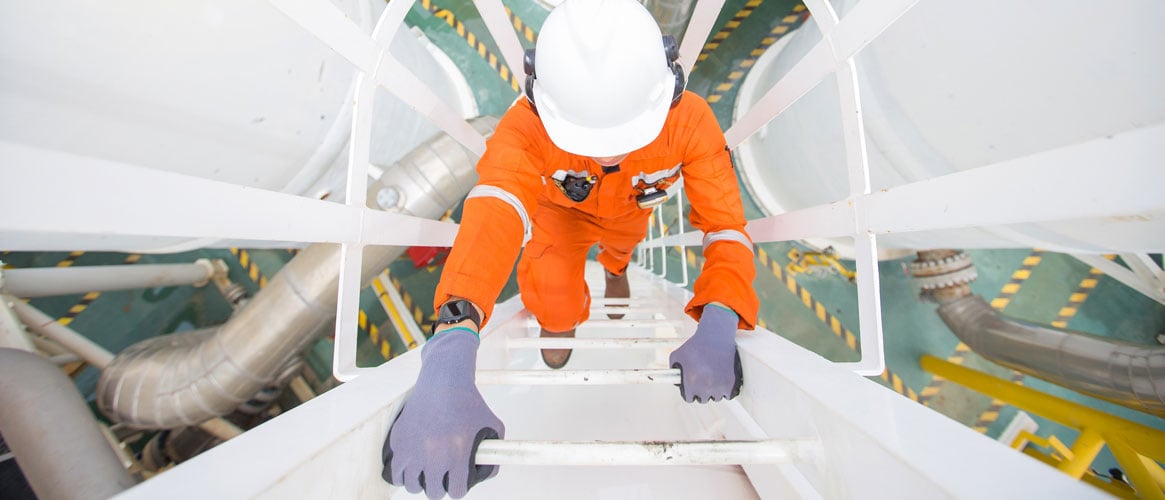Many work site injuries are caused by accidents involving ladders that are not placed or used safely. Following these safety guidelines can help prevent ladder accidents. Always check the ladder’s condition before use. Make sure there are no broken, cracked, or missing rails and that rungs are not slippery from grease or oil. Check for damage or corrosion on metal ladders. If a ladder is in poor condition, do not use it. Tag and remove the ladder from service and report the problem so it can be repaired.
A competent person should periodically inspect all ladders and remove damaged ladders from use until they are repaired. Always follow the manufacturer’s recommendations for the use of the ladder, which are posted on the side of the ladder.
When choosing and using a ladder, keep the following in mind:
- Choose the appropriate type and size ladder for the job, including correct fittings and safety feet.
- Near electrical conductors or equipment, use only ladders with non-conductive side rails.
- Set the ladder on solid footing, against a solid support.
- Place the base of a straight ladder out away from the wall or edge of the upper level about one foot for every four feet of vertical height.
- Be sure the side rails of straight ladders extend at least 36 inches—or three feet—above the landing.
- Job-made ladder cleats must be 15-20 inches wide and uniformly spaced 12 inches apart vertically.
- Never try to increase the height of a ladder by standing it on other objects, such as boxes or barrels or by splicing two ladders together.
- Tie, block, or otherwise secure portable ladders against movement.
- Keep ladders away from doorways or walkways, unless they can be protected by barriers.
- Keep the area around the top and base of the ladder clear. Don’t run hoses, extension cords or ropes on a ladder; these may create obstructions.
- To avoid slipping on a ladder, check your shoes for oil, grease, or mud and wipe it off before climbing.
- Climb the ladder carefully, facing it and using both hands. Use a tool belt or hand line to carry materials.
- Most ladders are designed to hold only one person at a time. Two persons may cause the ladder to fail or be thrown off balance.
- Do not lean out to the side when you are on a ladder. If something is out of reach, get down and move the ladder.
- Ladders should never be used sideways as platforms, runways, or scaffolds.
Choosing and using ladders wisely is a step in the right direction.
For additional information on the safe use of ladders, please see Cal/OSHA’s Portable Ladder Safety e-tool and the Cal/OSHA regulation.
